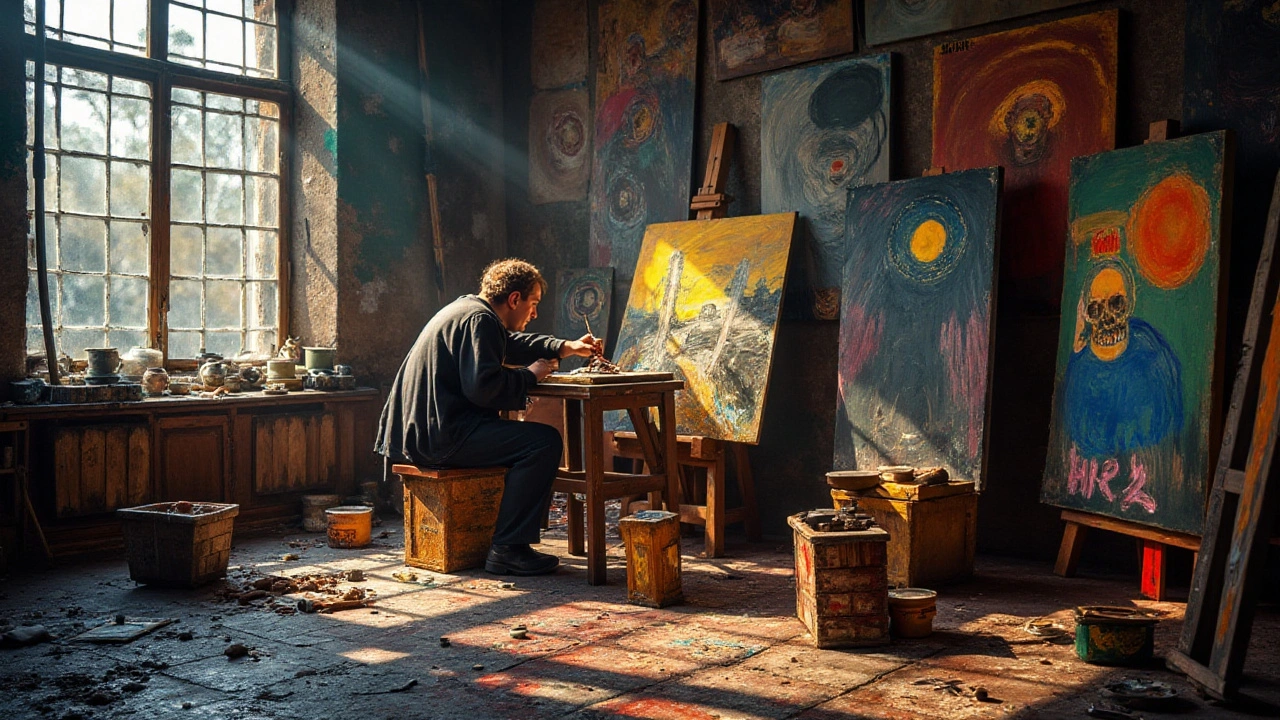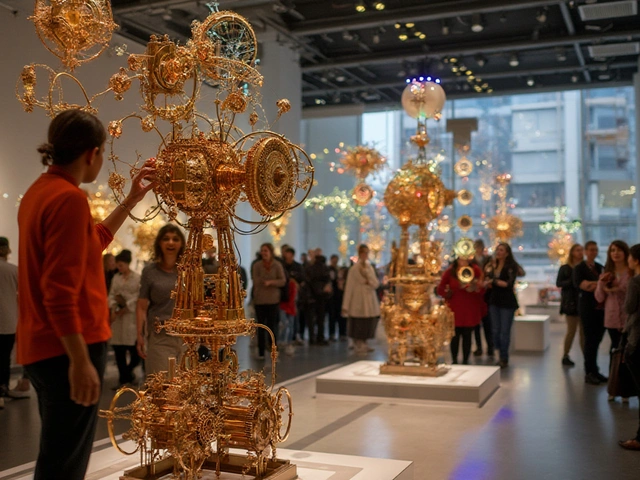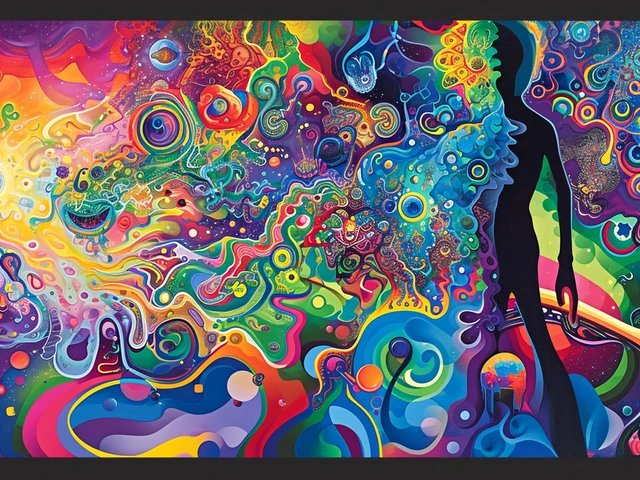The early 20th century was a fertile ground for artistic revolution, and among the distinguishing marks on its canvas sits Expressionism. Characterized by its bold, radical approach, this movement challenged the world to see beyond the facade, to explore the essence beneath. This narrative was not just told in paint, but jumped across different media—gradually finding its way into literature, theater, and even film.
At its core, Expressionism was a loud shout in the quiet rooms of realism, seeking to externalize the tumultuous feelings of its age. It called on artists to express—sometimes even distort—the world through the lens of emotion and experience. By the time it fully took root, Expressionism had left an indelible impact on our understanding of art's role in society, entwining itself deeply within the cultural fabric.
- Origins of Expressionism
- Key Characteristics of the Movement
- Pioneering Artists and Their Works
- Expressionism Beyond Painting
- The Movement's Influence on Contemporary Art
- Expressionism in Popular Culture Today
Origins of Expressionism
Expressionism, as an art movement, germinated in the rich cultural soil of early 20th century Europe—a period marked by rapid industrialization and profound social change. It was amidst the chaotic swirl of these societal shifts that artists felt a growing discontent with traditional forms of art that sought merely to capture the visible world. Instead, they turned inwards, seeking to portray the often tumultuous emotions and vivid internal landscapes of the human psyche. This shift, primarily taking root in Germany around 1905, was less a rejection of realism and more a passionate drive to heighten the inner experiences over the external appearance.
The roots of Expressionism can be traced back to the works of post-impressionist and symbolist painters like Vincent van Gogh and Edvard Munch, who began to prioritize personal perspectives and emotional depth over precision in representation. In many ways, these pioneers laid the groundwork for what would become a much broader movement. The urban bohemia of cities like Berlin, with its burgeoning intellectual climate and gathering of avant-garde circles, provided a fertile ground for Expressionism's development. The movement wasn't merely confined to visual arts; it included a transformative approach to literature, theater, and other art forms.
"What the Impressionists gave their viewers was a fleeting moment. What we wished to give was the inner space, what was universal, eternal," expressed Austrian painter Egon Schiele, describing the aspiration driving the Expressionist movement.
As the initial spark of Expressionism caught flame, it ignited a collective of German artists known as Die Brücke (The Bridge) in 1905. This group, founded in Dresden, aimed to link art's traditional roots with its future—much like a bridge. Their output was characterized by raw emotion, vivid colors, and often distorted figures, echoing their cry from the depths of the human soul. Shortly thereafter, in the 1910s, another influential group called Der Blaue Reiter (The Blue Rider) emerged in Munich, spearheaded by figures like Wassily Kandinsky and Franz Marc. These artists aspired to transcend the material world through their art, emphasizing spirituality and color theory.
Interestingly, it wasn't merely the artistic outputs that defined this burgeoning movement but the context from which it sprang. The socio-political unrest and spiritual crises that engulfed Europe at the time were both muse and catalyst for this powerful artistic outpouring. Understanding the origins of Expressionism requires recognizing it as a profound response to modernity's alienation—a collective scream against the stark realities of an industrialized society and a mechanized way of life.
As Word War I loomed on the horizon, the tensions that would engulf Europe were palpable. Expressionists sought to capture these premonitions of impending disaster, the intense anxiety, and the existential ponderings that pervaded their society. Their art became a shocking mirror reflecting the inner workings of their rapidly changing world. By embracing distortion and emotion as primary vehicles for truth, Expressionism's legacy was cemented not just in the history of art, but in the fabric of collective human experience.
Key Characteristics of the Movement
The Expressionist movement, an avant-garde revolution in its time, is distinguished by a handful of defining elements that propelled it into the annals of art history. Central to these is the intense focus on conveying authentic and raw human emotions, over the depiction of mere physical reality. This focus allowed for a unique introspective approach that was often emotionally charged, making the artwork resonate with the inner realities of human existence. Artists saw the world as a reflection of their personal psyche, transforming their inner tumult into visual spectacles that challenged the viewer to confront their own existential thoughts.
A notable characteristic of Expressionism was its bold use of colors, often unfolded in a manner that deviated from the real world's palette. Artworks brimmed with vivid, contrasting hues that heightened drama and underlined emotional intensity. This deliberate manipulation of color conveyed moods rather than scenes, igniting viewers' emotions. Lines within these works were seldom smooth or controlled; instead, they were jagged, erratic, and reminiscent of the chaotic energy running through the veins of the society marked by rapid industrialization and change.
Another hallmark of this movement was its approach to form and shape. Expressionist paintings rarely adhered to the traditional rules of perspective and anatomy. Figures were distorted, backgrounds abstracted, lending a dreamlike or nightmarish quality to many works. This aesthetic choice amplified the subjective experience, aligning with the artists' desire to evoke emotions rather than representational fidelity. The departure from conventional representation became a valuable tool in communicating deeper psychological truths to its audience.
Perhaps unexpectedly, Expressionism also found resonance in addressing sociopolitical contexts. As society stood on the brink of two World Wars, the movement responded to the heightened tensions with art that reflected the anxiety of the times. Artists dove into themes of despair, alienation, and the quest for individual autonomy in a rapidly changing world—a sentiment echoed eloquently in the works of Edvard Munch, whose 'The Scream' became an iconic representation of existential dread. As art historian Eliza Trapp once remarked,
"Expressionism is not solely a visual commentary but a profound psychological exploration."
While primarily rooted in Germany, this movement's impact stretched well beyond, touching global artists who brought their interpretations to the fore. As Expressionism branched into different art forms, it fostered a cross-pollination of ideas and techniques that shaped music, literature, and theater. The theatrical realm adopted exaggerated gestures and movements akin to the visual art’s distorted linework, immersing audiences into the emotional landscapes that Expressionist painters crafted with their brushes.
In summation, Expressionism eschewed traditional aesthetic values, choosing instead a path that prioritized the introspective and emotional facets of human consciousness. Its iconoclastic flair and intense emotional content served as a powerful vehicle for artists to convey the complexities of the human experience. Even today, the enduring legacies of this movement can be felt, with its influence pervasive in contemporary art, deeply embedded in the cultural tapestry that continues to shape our world.
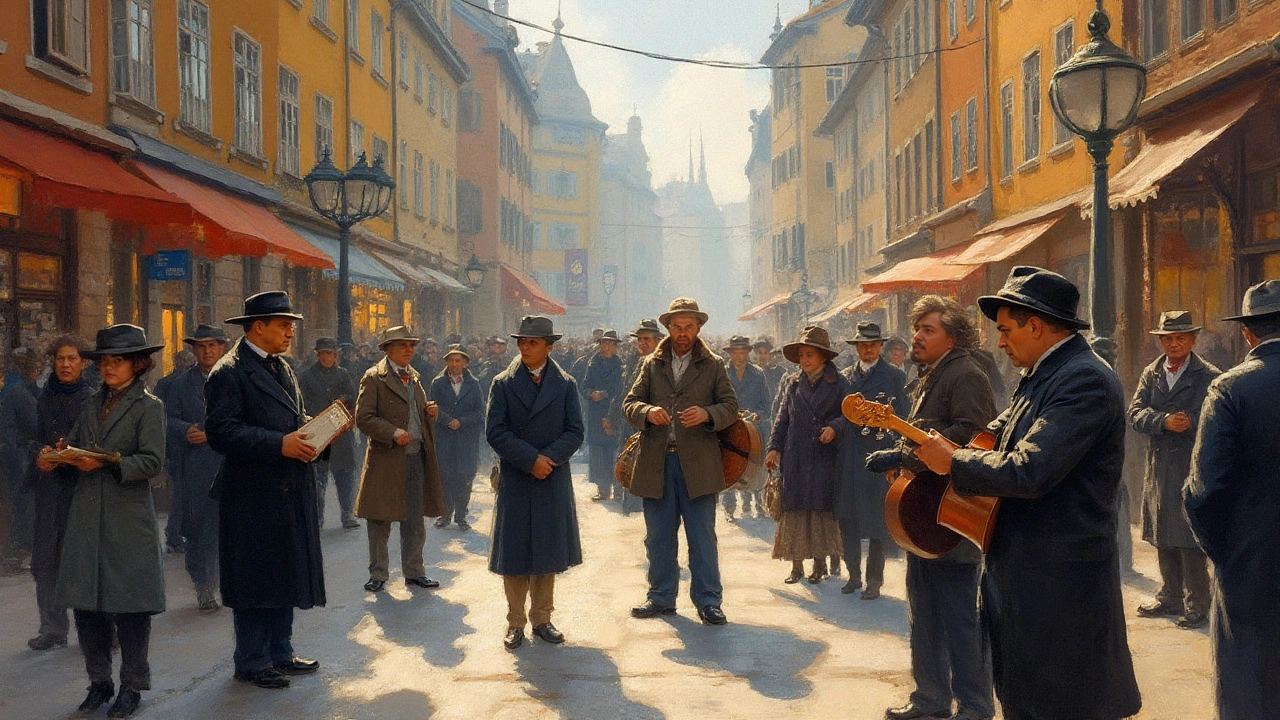
Pioneering Artists and Their Works
Expressionism, more than a mere art movement, was a personal mission for many of its founding artists who sought to bring raw human emotion to life on canvas. Among the pantheon of revolutionary artists, Edvard Munch stands as a towering figure. His iconic piece, "The Scream", effectively embodies the anxiety and alienation that typified expressionist art. This painting is not just noteworthy for its vivid palette and swirling forms but also for its ability to resonate with the viewer's own inner turmoil, making it one of the most recognizable works in art history. Munch's pioneer spirit in expressionism compared the canvas to a 'kind of mirror' to one’s soul, influencing generations of artists.
Another cornerstone of expressionism is Wassily Kandinsky, an artist whose work veered into abstraction. He saw art as a deeply spiritual practice, where colors and shapes could communicate feelings and spirituality beyond the constraints of the visible world. Kandinsky's painting, "Composition VII", is a notable example of how expressionist art broke free from traditional forms and narratives, instead of delving deep into the exploration of emotion. It's in this blending of abstract and expressionist ideals that Kandinsky carved out his niche, firmly establishing him within the expressionist canon.
Ernst Ludwig Kirchner, a co-founder of the German Expressionist group Die Brücke, propelled expressionism forward by exploring new perspectives in depicting modern life. His work captured the essence of pre-World War I Berlin, celebrating movement and modernity in vivid hues and bold lines. Kirchner's "Street, Berlin" is a keystone piece in understanding how expressionists sought to convey both the vibrancy and isolation of urban existence. His intricate brushwork invites the viewer to experience the pulse of the city while simultaneously feeling its palpable tensions.
Exploring the rather somber tones of expressionism, Egon Schiele brought an intense psychological and emotional depth to portraiture and figurative art. Known mostly for his raw portrayal of the human condition, Schiele's works, such as "Seated Woman with Bent Knee", used stark, bold lines to reflect the complexities of identity and expression. His art puts an emphasis on the human figure, capturing the vulnerability and intensity of emotion through distortion and exaggerated poses.
Each of these artists, through their pioneering works, contributed not only to the development of Expressionism as an influential art form but also left a lasting legacy that challenged and expanded the boundaries of artistic expression. With their unique approaches, they enriched the art world by encouraging a move away from traditional representation towards a more personal, emotion-driven commentary on human experience. In the words of Kandinsky, "Color is a power which directly influences the soul."
Expressionism Beyond Painting
When one speaks of Expressionism, the swirling colors and exaggerated forms of painting often leap to mind. Yet, the influence of this artistic movement permeated much deeper, reaching into the realms of literature, theater, music, and even film. This expansive reach showed the true versatility and adaptability of Expressionism, as it seamlessly meshed with other forms of art to create new experiences and dialogues. The root of this dynamic spread lay in the central tenets of Expressionism itself, emphasizing emotion, distortion, and evocation over mere representation of reality. The word found its way into literature, giving writers the tools to explore complex themes of inner turmoil and existential angst, themes that resonated deeply with the modern psyche.
In literature, Expressionism was less about structure and more about conveying the raw, often jagged emotions of the characters. Take Franz Kafka, whose works, while not strictly labeled as Expressionist, embody the style’s desire to delve into the existential, the absurd, and the hauntingly personal. His texts often cast a haunting view of the human condition, distorted by personal anxieties and a fragmented world. Theater, too, became a vibrant canvas for Expressionism. Known as Expressionist theater, it rejected the passive and realistic narrative arc in favor of the bizarre, the dreamlike, and the abstract. Plays by playwrights like August Strindberg and Bertolt Brecht showcased a break from traditional storytelling, using exaggerated movements, stark settings, and intense dialogues to invoke powerful emotional responses. These works often eschewed logical narratives to capture a more profound truth tied to human emotions and experiences.
"The expressionist poet believes not only that the face of the world, distorted, reveals the soul more clearly and strikingly, but also that the soul, pinned on the cross by a distorted version of the world, reflects the world more truly." – Herbert Read
From the world of theater, Expressionism strolled into the corridors of cinema. Early film directors such as Fritz Lang and Robert Wiene pushed the boundaries of film as a narrative medium. Movies like "Metropolis" and "The Cabinet of Dr. Caligari" are striking examples of Expressionist cinema where visual style takes on incredible significance. These films featured distorted sets and dramatic lighting, creating a surreal world where the external environment mirrored the psychological states of the characters. Expressionist tactics in filmmaking laid the groundwork for much of what would become film noir and horror film aesthetics, demonstrating long-lasting influence on cinematic styles to this day. Even in music, though less overt than in visual arts, the Expressionist movement had its echoes. Composers like Arnold Schoenberg ventured into atonality, crafting music that was strident and free of traditional harmony, aiming to evoke intense emotional landscapes in sound, mirroring what their contemporaries in painting and literature sought in their mediums.
Clearly, the reach of Expressionism exceeded its initial boundaries, making strides across numerous artistic platforms and altering the artistic landscape considerably. By breaking free from the confines of traditional realism, Expressionism forged a new path for artists of all kinds to explore the depths of human consciousness. This approach allowed their audiences to encounter art not just as passive enjoyers but as active participants — through the bewildering blend of imagination and emotion, they were forced to engage, feel, and contemplate. This cross-medium engagement continues to ripple through art cultures today, making Expressionism not just a historical footnote, but a living force that challenges artists to express the raw eddies of human emotion in myriad forms.
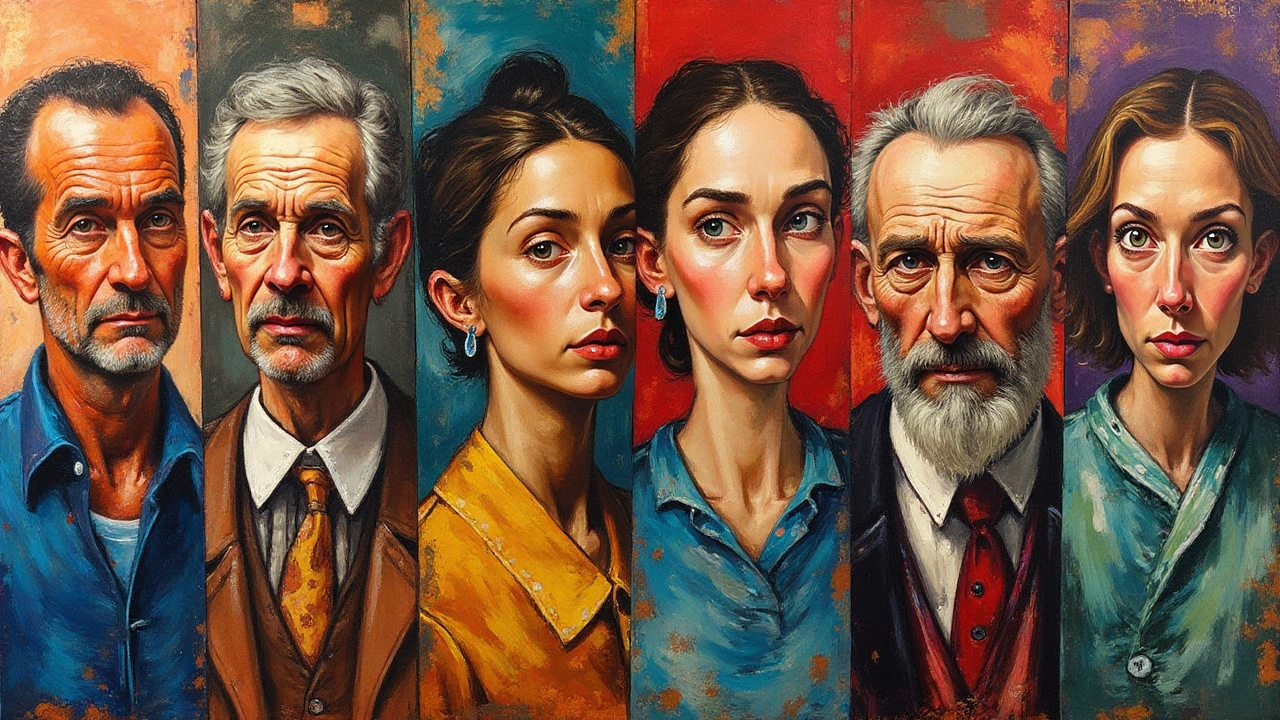
The Movement's Influence on Contemporary Art
Expressionism, with its raw and bold approach to artistic creativity, continues to cast a long shadow over contemporary art. It shattered the illusions that art must reflect reality with precision and stoicism, offering a fresh paradigm where emotions held the brush. Modern artists, standing on the shoulders of Expressionist giants, have taken this legacy to new heights and diverse forms, often interweaving the chaotic and vibrant visual language borne of Expressionism into their works. This is particularly evident in the abstract pieces of today's galleries, where exaggerated forms and stark contrasts speak both to the heart of modern life and to our personal experiences.
The transformative nature of Expressionism can be seen in numerous branches of the art world today, with abstract expressionists like Jackson Pollock and his signature drip technique drawing a direct lineage to their forerunners. The expressive potentials realized by Expressionism now allow contemporary artists the freedom to convey not just existential angst but a full spectrum of emotions, harnessing bold, sweeping strokes and violent contrasts of tone and color. These are more than techniques—they are storytelling devices that have allowed the essence of Expressionism to transcend its historical confines.
Moreover, Expressionism's influence is vivid in the world of digital art, where artists exploit technology to depict human emotions in dynamic visual narratives. In a way, today's digital canvases are the new Franz Marc's or Egon Schiele's, vivid in color and form yet tailored for the 21st century audience. As artists continue to push the boundaries of what mediums can portray, the emotional vibrancy key to Expressionism finds fresh soil in virtual reality and interactive platforms, breeding a new generation of art that holds emotion at its core.
Film and graphic novels are also steeped in Expressionist influence, with directors like Tim Burton and Guillermo del Toro channeling its eerie and surreal aesthetics. Expressionism's narrative power enables filmmakers to conjure otherworldly realms that tap into our psyche's depths. This isn't just about style; it's an intentional command of mood and atmosphere, creating immersive experiences that resonate with an audience's inner fears and aspirations.
"The primary purpose of art should be to express the inner human reality and catalyze an emotional connection," remarked art historian Charles Howard.Such a mindset fuels modern directors and visual storytellers, allowing the tropes of Expressionism to shape entire genres and cultures.
The globalization of art has also been a vehicle for Expressionism's principles, capturing the imaginations of diverse cultures who reinterpret these themes in localized contexts. Across the globe, artists are integrating traditional cultural motifs with the dramatic flair of Expressionism, creating a mosaic of visually arresting, emotionally potent works. This amalgamation underscores the correlations between local narratives and universal human conditions, showcased poignantly in public installations and community murals that echo the audacity of their early 20th-century counterparts.
Expressionism's pervasive influence on contemporary culture cannot be overstated, fostering a rich dialogue that bridges past and present artistic visions. As technology and media continually advance, expanding the platforms for expression, the core tenets of Expressionism—emotional rawness, subjective perspectives, and bold aesthetics—remain ready to inspire and transform what we consider art. They remind us of art's potency not just as a reflection of the world around us, but as a profound exploration of the worlds within us.
Expressionism in Popular Culture Today
Expressionism’s influence is far from relegated to museums and historical texts; it pulses vibrantly through the veins of modern popular culture. In today's world, its impact is evident across various media, breathing life into new forms of artistic expression. To witness the spirit of Expressionism today, one might look to the realm of cinema, where directors like Tim Burton and David Lynch harness its themes to evoke beauty in the fantastical yet unsettling landscapes they craft. Their work doesn’t just entertain; it challenges audiences to confront their feelings, echoing the Expressionist mantra of manifesting internal worlds. The bold, expressive visual style in films such as 'Edward Scissorhands' and 'Mulholland Drive' draws roots from this storied movement, with each scene crafted carefully to provoke reflection and emotion.
A glance at the music industry further reveals how Expressionist principles permeate through the modern soundscape. Bands and artists, ranging from avant-garde creators to mainstream musicians, often draw upon the expressive liberties forged by early 20th-century pioneers. The emotional resonance and experimental approaches found in genres like experimental rock and post-punk owe their textured depth to the echoes of Expressionism's emotive drive. This linkage between past and present underscores Expressionism’s timeless relevance, fueling the creative engines of today’s artists who seek to convey more than what is seen at surface level.
In visual arts, the essence of Expressionism is found in street art and contemporary installations, where artists express through vivid colors and exaggerated forms to convey societal angst or personal narratives. Modern-day murals are splashed across city walls across the globe, offering raw commentaries on themes such as identity, resistance, and the human condition. These artists, like Expressionists before them, navigate complex emotions and societal issues, presenting them in abstract and provocative manners that engage viewers on a deeply personal level.
The realm of digital media also reflects the enduring presence of Expressionism. Video games, as a relatively new platform, frequently incorporate themes and visuals inspired by Expressionist techniques to enhance storylines and evoke emotional responses from players. The striking use of color, shadow, and perspective within these games ties back to the movement's original intent of stretching beyond realism to evoke deeper psychological impact. Notably, games such as 'Limbo' and 'Inside' use stark, minimalist palettes and abstract imagery to create haunting atmosphere and evoke profound emotional journeys, resonating with the principles of Expressionism.
It's clear that Expressionism isn’t merely a relic of the past. Rather, its legacy persists dynamically, influencing modern creators across a spectrum of disciplines. By channeling powerful emotions and perspectives, Expressionism continues to inspire new generations of artists. The movement has firmly planted its roots in popular culture by enhancing narratives and aesthetic approaches, reinforcing its enduring relevance as it adapts and evolves with the changing facets of society.
According to art historian Sarah C. Wilson, "Expressionism is not just an artistic style, but a mode of self-understanding and societal interpretation that continues to flourish by embracing the complexities of the human psyche."

